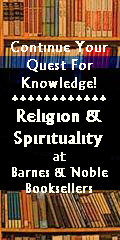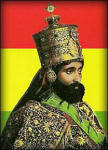
May You Be Blessed by the God of Your Heart |
The Geography of RastafarianismThe Essentials of the Faith
Adherents: Rastafarianism began in Jamaica, where 6 out of 10 Jamaicans claim to be Rastafarians. However, many of the religion's conservatively estimated 700,000 adherents are spread throughout the world (Barrett, p. vii). Distribution: Currently, the Rastafarian movement has branches in England, Canada, the Caribbean islands and America as well as members in most of the civilized countries (The Perennial Dictionary of World Religions, p. 601). Major Teachings: There is no set doctrine for the religion, but there are some agreed upon principles of the faith. Most Rastafarians regard Haile Selassie as the Divine God, and is referred to as Jah. Selassie was a devout Orthodox Christian himself, but this only reinforced followers, who claimed that their god was not supposed to know that he was god. There is no afterlife, or hell as Christianity believes. Rastafarians do, however, view Ethiopia as their heaven on earth. "Babylon" is the Rastafarian term for the white political power structure that has been holding the black race down for centuries. In the past, blacks were held down physically by slavery. Presently, Rastafarians accuse "Babylon" of using economic and social means to hold back people of color.
Symbols and Practices: Rastafarians use color as the most obvious
symbol of their religion. The colors of Red,
Gold, Green
and sometimes Black are often displayed on flags. Another
symbol of Rastafarianism is the Lion of Judah, which represents Haile
Selassie, the Conqueror and successor to the biblical throne of David.
Dreadlocks are a feature common to Rastafarians. The dreadlocks are said to represent the Rastafarians' roots, and to contrast with the straight, blond look of the white man and the white establishment. Rastafarians are also well known for their use of marijuana, also called ganja, in their religious practices. The expression "I and I" is common to Rastafarians. It is a way to show that all people are equal, and is also used as a reference indicating that Jah is always with you. The Reggae style of music has traditionally been a spiritual and popular expression of the Rasta culture, led until his death by Jamaican Reggae star Bob Marley. Major Divisions: There is no unified Rastafarian Church, but there are different groups of Rastafarians, each having different beliefs. The largest is the Twelve Tribes of Israel, founded in 1968 by Dr. Vernon Carrington, known as Prophet Gad. This group is closely tied to the Royal family of Ethiopia in exile, and working to restore to the throne Zere Yacob, Haile Selassie's grandson. The "Bobo Dreads, or the Ethiopian national Congress, is another group of Rastafarians. The Ethiopian World Federation (EWF), Ethiopian Zion Coptics, and the Nyhabinghi Theocracy Government are some other groups of Rastafarians. Major Holy Days: April 21, 1966 is regarded as Grounation Day to Rastafarians. On this day, Emperor Selassie arrived in Kingston, Jamaica on a state visit. Rastafarians do not celebrate traditional Babylon events, such as Christmas. When a congregation of Rastafarians have a gathering, its is called Nyahbinghi.
The Details about Rastafarianism
Aside from these basic principles, "true" Rastafarians only eat "I-tal" food -- organic food that never touches chemicals or comes out of cans. No salts, condiments, or preservatives are allowed either. Also not allowed is flesh, blood, or white blood (as Rastafarians call milk). Alcohol is prohibited as are all other non-herbal drinks. Rastafarians also use ganja (marijuana) in much of their cooking.
The Geography of RastafarianismOne of the foundations of Rastafarianism is the return to Africa those who had been enslaved by Babylon and brought to the New World. Jamaica is the cultural hearth of Rastafarianism, although there are other sites of importance to the faith. From Jamaica, Rastafarianism spread through processes of natural diffusion and migration to centers of the Carribean diaspora throughout the world, especially in cities of the United States and the United Kingdom. Through the growth in the popularity of Reggae music, Rastafarian culture had a much wider diffusion throughout the world. Emperor Haile Selassie visited Jamaica on April 21, 1966, at the government's request. However, attempts have been made by the Jamaican government to squelch the perceived revolutionary threats of Rastafarians. The Emperor was greeted by thousands of followers upon arrival to Jamaica, and this day is now celebrated by Rastafarians as Grounation Day. During this visit, when confronted with the issue of repatriation, Emperor Selassie instructed Jamaicans to build Jamaica first and liberate its people, before immigrating to Ethiopia. Emperor Haile Selassie died on August 26, 1975, after being imprisoned by the Provisional Military Government that had deposed him the previous year.
ReferencesBarrett, Leonard E., Rastafarians: Sounds of Cultural Dissonance. Boston: Beacon Press, 1988. Budge, E. A. Wallis, (ed.), The Queen of Sheba & Her Only Son Menyelek [Kebra Negast]. London: The Medici Society, Ltd., 1922. Chevannes, Barry, "The Bobo Dread," OneWorld Magazine, 1994. (15 April 1999) http://www.webstories.co.nz/focus/etiopa/rasta.html.
Links for More InformationEach of the websites below have lists of many links. Rather than duplicating them here, the reader is encouraged to explore them.
Selassie Family Official Web Site -- allegedly so
Special Thanks goes to Kevin Adams for preparing his contributions in .HTML format. Return to The Geography of Religion Menu Page |
